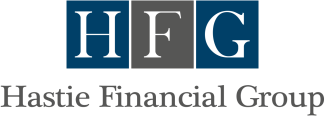February Newsletter
Market Report :
After stellar performance in 2019, the investment markets began January keeping a similar pace. Gaining more than 2% in the first few weeks, the U.S. equity market made it look as though analysists were going to have to rethink their forecasts for 2020. Then in the last week of January came news of the coronavirus, driving markets downward around the world. The news got worse when victims of the virus were first detected in the U.S.
As a result, both the Dow and S&P 500 ended January in the red, losing 0.89% and 0.04%, respectively. The NASDAQ experienced strong early-month gains, enough so to still post a gain of 2.03% by month’s end.
International stocks did not fare as well. Developed international stocks, measured by the MSCI EAFE index, fell 2.09% in January, while MSCI Emerging Markets Index fell 4.66%. Much of these declines coming in the last week of the month due, again, to the coronavirus and its potential effect on China’s economic growth.
The rapidly declining stock market at month’s end ignited a flight to quality, giving bonds a strong start to the year. Long-term high quality bonds fared the best, with intermediate term bonds benefiting as well from declining stock prices. For January, the Bloomberg Barclays U.S. Aggregate Bond Index gained 1.92%. This is evidence that the stock market and high quality bonds typically (but not all the time) move in opposite directions – a term referred to as being negatively correlated.
While high quality (investment grade) bonds benefited from the decline in stock prices, high yield (non-investment grade) bonds did not perform as well. This is because high yield bonds are more highly correlated to movements in stock prices than are their investment grade counterparts. For the month, the Bloomberg Barclays U.S. High Yield Index gained 0.03%.
Market Perspective :
Heading into 2020, it was widely believed that the investment markets, especially the world’s stock markets, would experience more volatility than in 2019. That expectation was based on the market’s normal ebbs and flows, and then amplified by this being an election year.
Now enter factors outside the markets, like the coronavirus. These factors affecting the markets are not possible to predict because that cannot be foreseen.
So based on normal market volatility alone, and then adding the possibility of outside factors, we maintain a high degree of diversification in all six of our managed portfolios. This means that we seek to spread out the risk inherent in each portfolio, selecting several different areas of the investment markets in which to invest. We seek to maintain varying degrees of negative correlation among our portfolios, which seeks to have some portfolio assets typically (but not always) move in opposite directions through a normal market cycle.

